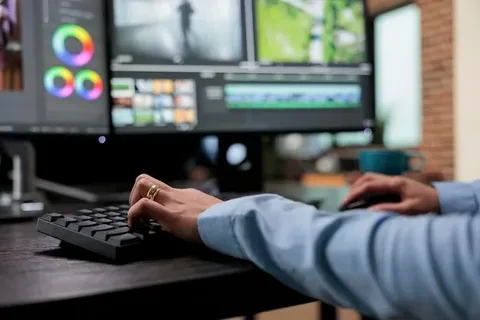In the world of digital storytelling, visuals are everything. Whether you’re a professional filmmaker, a YouTuber, or just someone passionate about video content, the journey from raw footage to a polished film often involves a critical step—video editing filters. This article explores how video editing filters transform raw clips into cinematic masterpieces, and why they are indispensable in modern video production.
The Role of Filters in Video Editing
Video editing filters are tools or presets used to enhance or alter the visual appearance of video clips. They can adjust color, lighting, contrast, sharpness, saturation, and even the mood of a scene. Filters are to videos what spices are to food—essential ingredients that add depth, character, and appeal.
Without filters, even the most beautifully shot video can appear flat or unpolished. Filters help create consistency across multiple shots, correct imperfections, and emphasize the story’s tone.
From Raw Footage to Refined Visuals
When filming, even the best cameras can’t always capture the perfect lighting, skin tones, or ambiance. This is where video filters step in. They allow creators to:
- Correct color imbalances (e.g., overly warm or cool tones)
- Match footage shot at different times or with different cameras
- Add stylized effects to give the video a cinematic or vintage feel
- Highlight subjects by adjusting brightness and focus selectively
This process is central to how video editing filters transform raw clips into cinematic masterpieces, turning ordinary visuals into extraordinary ones that capture emotion and draw viewers in.
Cinematic Styles and Storytelling
The power of filters goes beyond technical corrections—they shape the emotional tone of a story. For instance, a desaturated filter can evoke sadness or nostalgia, while vibrant colors can energize a scene. Many filmmakers use specific filters to mimic the look of classic films or to establish a unique visual signature.
Understanding how video editing filters transform raw clips into cinematic masterpieces requires recognizing their storytelling potential. They help guide the audience’s perception and emotional response, which is vital in any form of visual media.
Choosing the Right Filters
Not all filters suit every project. The right filter depends on:
- The genre (e.g., documentary vs. drama)
- The intended mood (e.g., romantic, tense, light-hearted)
- Lighting conditions during shooting
- Audience expectations and platform standards (e.g., cinematic vs. social media)
Using filters wisely—rather than overloading footage with effects—is what separates amateur edits from professional-grade productions.
Conclusion
In today’s visual-driven culture, video editing filters have become essential tools for creators of all kinds. They do more than just tweak colors; they breathe life into raw footage, enhancing storytelling and elevating production quality. It’s clear how video editing filters transform raw clips into cinematic masterpieces—by bridging the gap between vision and final product.
Whether you’re crafting a short film, a vlog, or a brand commercial, mastering filters is a vital step in making your content truly unforgettable.


